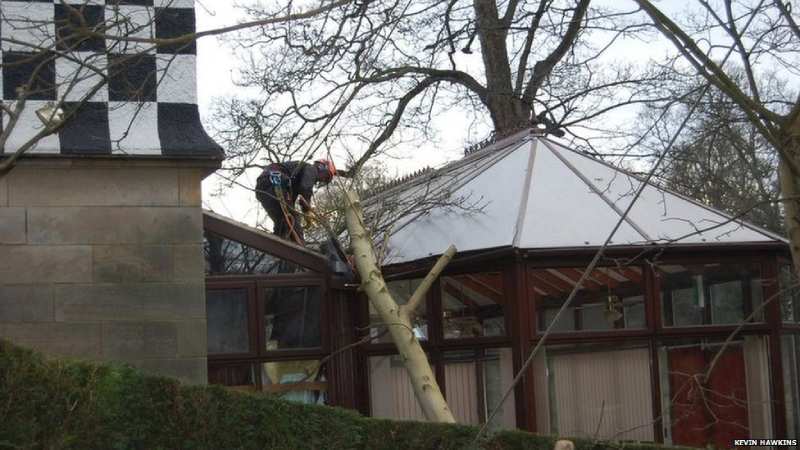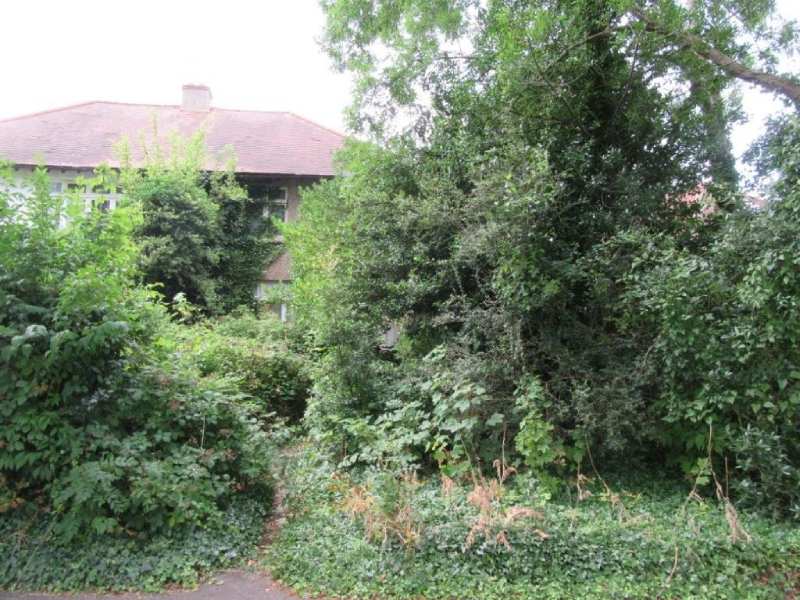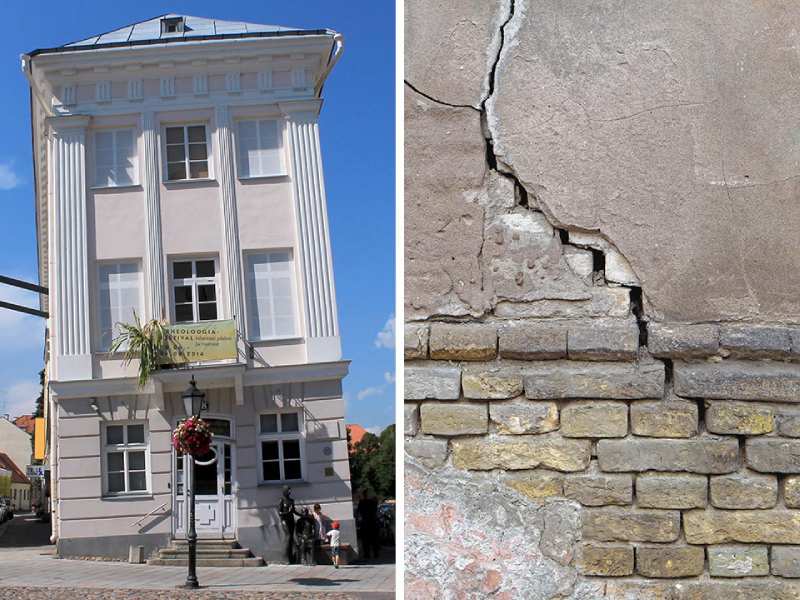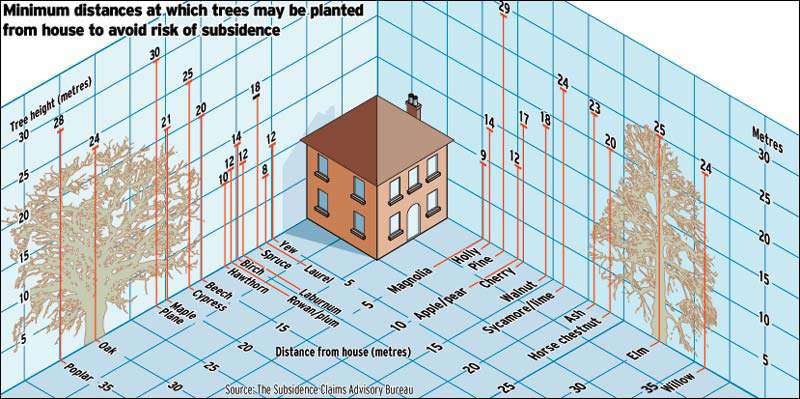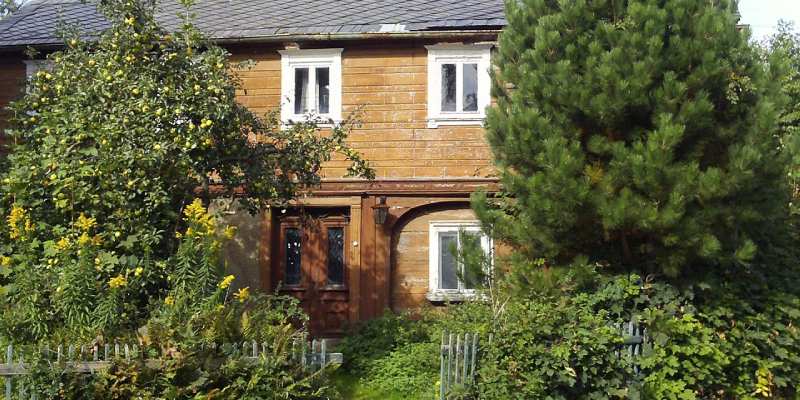
An Englishman’s home is his castle, and that goes for the garden as well as the house. If you’re lucky enough to have one or several native British trees in your garden, you will be rewarded with more than their majestic natural beauty. Trees provide much needed shelter and food for wildlife too. But while lush greenery may be a wonderful setting for your home, should you worry about any trees that are situated in close proximity to your house?
Many homeowners worry that trees in the garden, especially large specimens growing near the main building, could be causing structural damage to the home. Before going any further, it’s important to reassure anxious householder that this very rarely happens. Most trees will cause no damage to modern buildings, and no precautionary action is necessary.
Storm damage
That said, there is one factor that no-one can predict: the British weather.
Most people would agree that our weather has become more extreme and erratic in recent times, with hurricane force winds now being more common. A tree near the house poses an obvious danger since the main trunk could break in a storm (or indeed uproot the entire tree!) and fall onto the house, causing major damage.
If you think your home may be at risk from a tree fall, be sure to have a professional tree surgeon assess the condition of the tree(s) in question on a regular basis and take appropriate action where necessary. In some cases, you will need your local council’s permission to modify or fell certain trees, particularly if a Tree Preservation Order is in place.
Source: BBC
But leaving freak weather conditions aside, are there any risks of having a tree close to your property? While most trees cause no damage whatsoever, in some cases subsidence and structural damage can be traced back to tree roots. Let’s take a closer look.
Root growth
Whether or not there’s evidence of subsidence, root damage can become a problem in its own right. Since roots grow underground, you can’t see them, which makes any issues extra difficult to spot until damage is caused. Left unchecked, tree roots can lead to cracks in paved areas and driveways, and they can also enter and block drains. Older drains that are not watertight are most susceptible.
Regular tree maintenance is key. Rather than letting your garden become overgrown, seek expert guidance to safely deal with the trees that are close to the house. Actions to be taken may include pollarding the tree, creating physical underground barriers to contain root growth, or using slow-release chemicals to stop the spread.
It’s also worth pointing out that it’s not just trees that can cause damage, invasive tall hedges, large climbers and wall shrubs such as Pyracantha and Wisteria have been known to cause localised damage too.
Source: Brian Gale
Subsidence
This is a serious problem that a property can suffer, potentially affecting its structural integrity (and resale value). Subsidence is the downward movement of the earth’s surface, which can affect the building foundations. Generally only a problem on shrinkable clay soils, it’s buildings constructed before the 1950s with shallow foundations that are most at risk. Possible signs of subsidence in a building include uneven floors and cracks in the wall, typically around windows or doors.
The reason for this major problem is lack of moisture, due to trees taking up too much water from the soil, which makes the ground shrink. Tree roots will grow longer in search of moisture and can spread dangerously close to a building. Some trees are more likely to cause subsidence than others, with willows, poplars, oaks and ash trees being the most thirsty and therefore the worst offenders.
If you suspect that your home may be suffering from subsidence issues, your first port of call should be a Chartered Building Surveyor who will carry out a full building survey to establish the extent of the problem, and advise whether a passive monitoring service or active underpinning intervention may be required.
Source: Simply Business
How to minimise or prevent damage from trees
While having trees in the garden is a wonderful addition to your home, every responsible homeowner should have a clear understanding of what each species requires in terms of care and maintenance, along with any potential risks associated with nearby buildings. If you are thinking of planting new trees, make sure that your carefully select the right type of tree for your site and plant it at the correct distance from the house.
Source: Trees Please
If you are concerned about trees near houses and other buildings, here’s a quick summary of the salient points to bear in mind:
- Many trees grow near buildings and, in the vast majority of cases, never cause any damage.
- However, sometimes property damage resulting from nearby trees can occur, especially after a long period of dry weather.
- Subsidence, root damage and tree falls are the main problems posed by trees.
- Regular tree care and maintenance is key in keeping ahead of any issues. Instruct a professional tree surgeon for advice and to carry out any remedial work as needed.
- Any suspicions or signs indicating tree damage to a building should be investigated by a chartered building surveyor as a matter of urgency.

